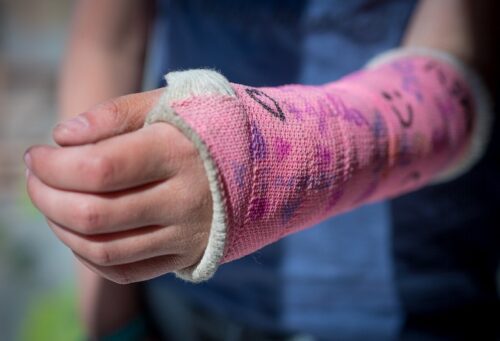NJ Wear and Tear Injury Lawyers

Over time, the physical demands of your job can take a toll on your body. If so, workers’ compensation benefits may be payable. We call these types of claims “WEAR and TEAR™” because they develop slowly over time.
Unfortunately, many workers don’t know they qualify for compensation. They’re told they are “just getting older,” or that workers’ compensation only covers injuries caused by accidents. At Petro Cohen, P.C., we know better.
We call these types of claims “WEAR and TEAR™” because they develop slowly over time.
Acute Vs. WEAR and TEAR Injuries
WEAR and TEAR injuries, include several different types of injuries resulting from repetitive, forceful, and/or awkward movements. In order for a workplace injury to be compensable under New Jersey’s workers’ compensation law, it does not have to be a sudden, acute injury. In other words, an injury does not have to occur in a sudden workplace accident in order for you to receive workers’ compensation benefits. There are other types of injuries that occur over time that may be just as debilitative as an acute injury. Repetitive stress injuries, also known as WEAR and TEAR injuries.
Se habla español. Haga clic aquí para ver el folleto de desgaste logico y normal en español.
One of the most common types of WEAR and TEAR injuries is carpal tunnel syndrome. This condition develops over a prolonged period of time due to repetitive motions; it often occurs as a result of performing work-related duties time and time again (e.g., extensive computer use, typing, etc.). In addition to carpal tunnel syndrome, lower-back injuries often result from factory jobs and other occupations that require heavy lifting. WEAR and TEAR injuries include damaged nerves, tendons, and muscles. In many cases, WEAR and TEAR injuries may affect more than one body part at a time. Just as with acute injuries, WEAR and TEAR injuries can significantly restrict an employee’s ability to perform expected job duties as well as an employee’s daily activities. The pain can be severe, and it tends to get worse over time. Because of the gradual nature of some of these injuries, many workers feel they should not report the injuries as workplace-related. In fact, the Occupational Safety and Health Administration (OSHA) reports that many are unreported or underreported as workplace injuries.
What Types of Benefits Can I Expect to Receive with My Claim
The benefits payable for WEAR and TEAR claims are identical to accident-related workers’ compensation benefits.
- Temporary Disability –These are tax-free weekly benefits representing 70% of your gross weekly wage, payable up to 400 weeks. These benefits are payable while you are temporarily unable to work because of a work-related medical condition and under active medical treatment.
- Medical Treatment –All reasonable and necessary medical charges to treat your work-related medical condition are payable by the workers’ compensation insurance carrier. The carrier has at least the initial right to authorizes specific physicians who are competent to treat your condition. If a problem arises concerning the medical treatment you require, you have the right (with our legal assistance) to make an application to a Judge of Workers’ Compensation for a determination as to what, if any, additional compensable medical treatment you require.
- Permanent Partial Disability –This is additional compensation which is payable to you if, after your completion of compensable medical treatment, you have a measurable loss of physical function proven by “demonstrable objective medical evidence.” This benefit can be payable to you even if you are able to return to work and have made an excellent recovery.
Are You At Risk?
Repetitive stress injuries (RSI) are becoming increasingly common in certain industries. Approximately 60 percent of work-related injuries involve RSI, also known as occupational overuse syndrome or WEAR and TEAR. The following list represents some examples of industries and jobs with potential WEAR and TEAR claims due to repetitive, job related physical stress.
- Almost all construction trade employees/construction labor
- Many casino positions, including food and beverage servers, housekeepers, dealers, EVS/maintenance, HVAC mechanics, etc.
- Medical professionals, including nurses, nurse’s aides, and physical therapists
- Emergency response/law enforcement personnel, including police officers, firefighters, and EMTs
- Trucking and delivery employees
- Secretarial/computer/data entry employees
- Warehouse and retail operations positions, including stockers/material handlers
- Landscaping/excavation and heavy equipment operators
- Utility workers, including cable, telephone, electric, etc.
- Highway maintenance and service industry employees
Your Medical Condition May Qualify

While the majority of RSI injuries affect the hands, wrists, fingers, and elbows, our firm often has clients with necks, backs, and shoulder injuries caused by repetitive stress. Any part of the body is susceptible, depending upon the type of work that is done. Parts of the body that are at risk for potential WEAR and TEAR claims include the following.
- Neck – especially disc abnormalities, operated or unoperated
- Low back – especially disc abnormalities, operated or unoperated
- Shoulders – including rotator cuffs, impingement, and labral problems
- Hips – osteoarthritic and degenerative conditions
- Knees – including internal derangement, meniscal lesions, and osteoarthritis
- Hands – including osteoarthritis, carpal tunnel syndrome, and de Quervain’s and trigger fingers
These are just a few examples of the many potential WEAR and TEAR claims.
You don’t have to be involved in a workplace accident in order to be hurt on the job.
In fact, WEAR and TEAR injuries, also known as repetitive stress injuries or RSIs, are the most common cause of workplace injuries in the U.S.
That’s because any kind of repetitive workplace activities, from using a computer keyboard or touchscreen, to swinging a hammer, to scanning groceries at a checkout, can cause WEAR and TEAR injuries over time. Here are some of the most common causes of workplace RSIs.
Computer Use
Computer use is perhaps the most well-known cause of workplace WEAR and TEAR injuries. Many workers develop carpal tunnel syndrome as the result of computer use in the workplace. Even using a computer to prepare invoices or create reports, communicate with customers, or ring up transactions can cause injury.
Using a computer, mouse, or touch screen involves making many of the same motions over and over again, often rapidly, and often without adequate opportunities for rest.
Tool Use
Swinging, lifting, or operating tools can cause incremental damage to muscles and tendons, even if it doesn’t feel strenuous at the time. Using power tools also carries a risk of RSIs, because they typically expose workers to prolonged vibrations that can weaken and inflame muscles and tendons.
Lifting, Reaching, Grabbing, or Pulling
Any job that requires you to grab, lift, reach, or pull objects – even small, light objects – can cause WEAR and TEAR injury. Whether you’re a mechanic, a butcher in a meat packing plant, a cashier at a grocery store, a delivery driver, or even a musician, repetitive lifting, reaching, grabbing, and pulling can cause WEAR and TEAR injuries.
Don’t Ignore Your WEAR and TEAR Injury
A WEAR and TEAR injury may be a legitimate workplace injury for which you should receive workers’ compensation benefits. If you believe you suffer from a WEAR and TEAR injury and it may be work-related, don’t be afraid to seek medical help. Let your doctor know you believe it is a workplace injury. While workers’ compensation insurance companies can make recovery for WEAR and TEAR injuries difficult, it is possible – especially with the right workers’ compensation attorney representing your interests. Many times, insurance adjusters presume that a WEAR and TEAR injury is related to the natural aging process or that it is due to a pre-existing condition that has nothing to do with work. If so, it is in your best interest to contact aggressive, knowledgeable legal counsel experienced in successfully representing employees with WEAR and TEAR injuries. It is important to note that the passage of time may be fatal to your claim. At Petro Cohen P.C., we have helped many employees who suffered WEAR and TEAR injuries. To determine if you have a potential WEAR and TEAR claim, schedule a confidential appointment with one of Petro Cohen, P.C. workers’ compensation attorneys. You work hard. Now let us work hard for you. Our experienced attorneys handle other types of cases as well, including:
- Workers Compensation
- Wear and Tear
- Personal Injury
- Automobile Accidents
- Trucking Accidents
- Bicycle & Motorcycle Accidents
- Slip & Fall / Trip & Fall
- Dog Bite & Animal Attacks
- Dangerous Property Conditions
- Construction Accidents
- Product Liability & Industrial Accidents
- Claims Against Public Entities
- Wrongful Death
- Social Security Disability


















